An introduction of Figma Mari Illustrious Makinami's articulation design after the previous posting. ^^
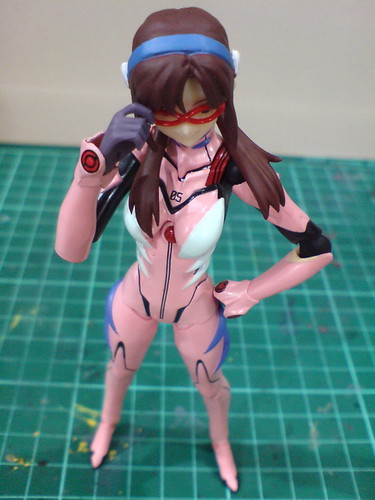

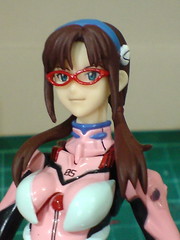


Very flexible vertical tilt for the head, with the range of neck bend exceeding that on most other average Figma figures.
This articulation capability is one of this Figma figure's special features, which was highlighted when she was first announced.
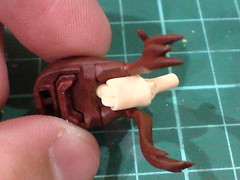
The double-hinge neck joint that enables the wide head articulation shown above.
It's special on Mari since most other Figma figures use the standard Figma joint for their neck, but in actuality, it's a very ordinary joint design. ^^;
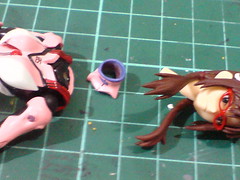

The collar piece is a separable part to avoid obstructing the neck joint's movement.
The very accurate cut of the collar piece that matches the neck area's design on the figure is quite impressive to me. ^^
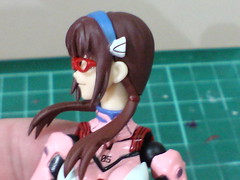
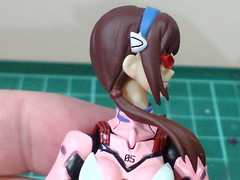
Horizontal tilt is not a problem at all for the head.
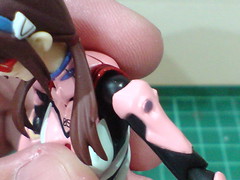

The shoulder features a non-standard double-ball joint that allows it to be bent forward. ^^

Due to the absence of any appendages on top of the shoulder area, Mari is capable of bending her arm upward for a wide degree. ^^

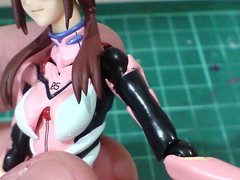
The shoulder joint's straight peg allows the upper arm to swivel around that joint.
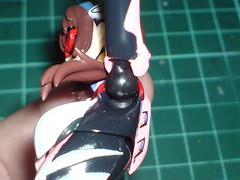
Since the entire armpit area of the Plug Suit is in black, the shoulder joint, which is molded in the same color isn't exactly noticeable.
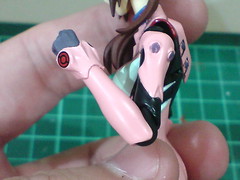
Standard articulation for the elbow.


Normal swivel joint for the wrist.
As you can see, the wrist attachment is separated from the forearm, allowing it to compliment the wrist swivel.
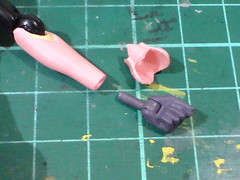
Separation of the wrist attachment from the forearm isn't just for flexibility of the wrist joint. It's part of Mari's "Beast Mode" configuration as well.
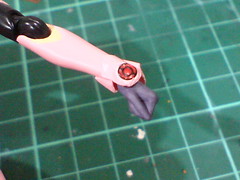

Standard hinge joint that allows the hand to bend inward.
On other Figma figures, the hand is able to bend outward using the same joint, but for Mari, that movement is blocked by the wrist attachment.
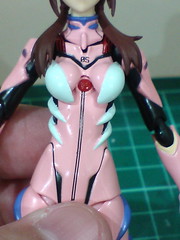
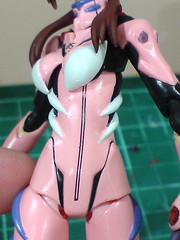
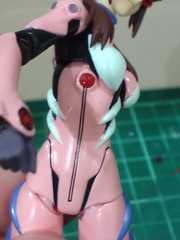
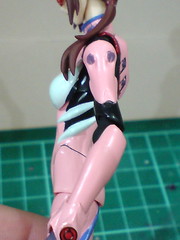
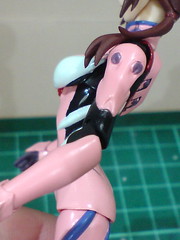
Side-to-side and forward-backward bends are possible for the waist.
Much like BRS2035, the split between the chest and abdomen is right beneath Mari's bust. It's a very clever design to give the body a seamless appearance while preserving the articulation. ^^


Standard ball-type joints for the hips.
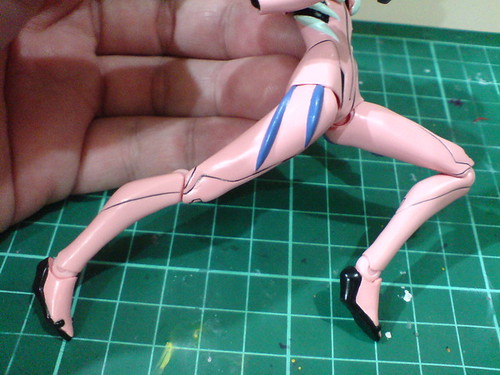
With nothing attached to her waist to block their movement, the hips can move flexibly, with great ease. ^^
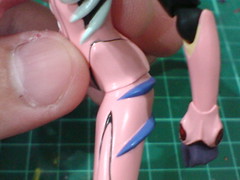
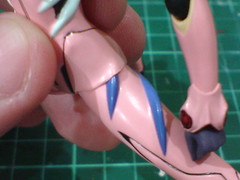
The edge of the hips acts as flap to cover up the split between the hips and the body. It's soft enough to not hinder the hips' movement as well. ^^

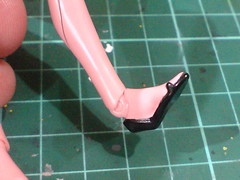

Standard forward-backward for the ankle joint.


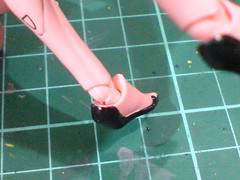
Using its peg joint, the ankle can swivel from side to side as well.
The "non-Figma joint" type neck joint is indeed something new in this action figure series, and it works very well in giving the head an improved range of articulation. Surprisingly, for some unknown reasons, that design wasn't utilized for most other Figma releases that came after Mari. ^^; Another two figures (that I know of) which do incorporated that double hinge neck joint are Asuka Langley Shikinami and Rei Ayanami, who are obviously from the same movie. It seems to me that the new joint was planned for these three Evangelion figures regardless of when they are coming out, but there was no intention to continue using said joint for other figures. Perhaps the perception that using a standard Figma joint for the neck is good enough is the reason behind that omission, but personally, I do like the double hinge neck joint. Not only does the head moves better, adjusting it feels easier as well. ^^
The Entry Plug module's articulation features were shown in Part 2 when all the accessories and option parts of this Figma set were introduced, so I'll skip that entirely in this posting.
Some action poses of Figma Mari after the introduction on its articulation design:
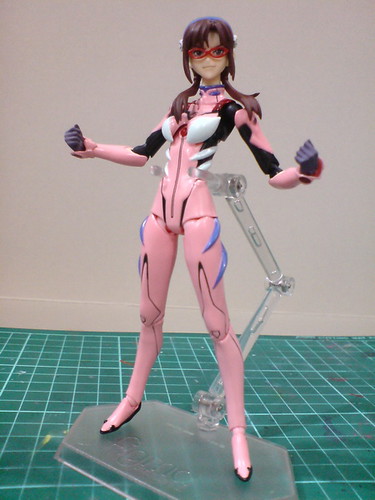
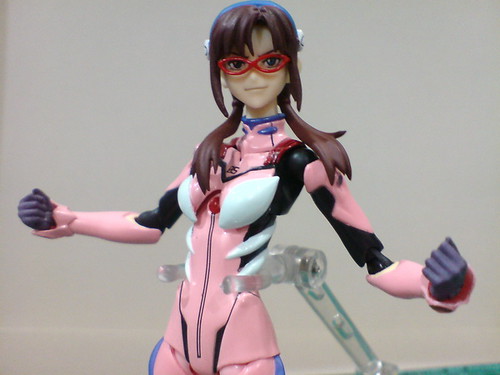

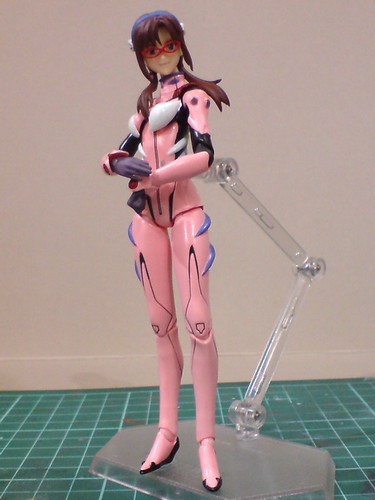
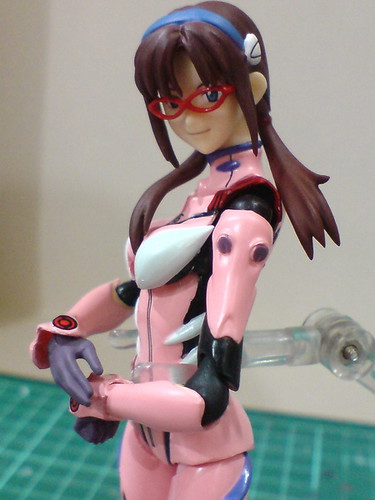
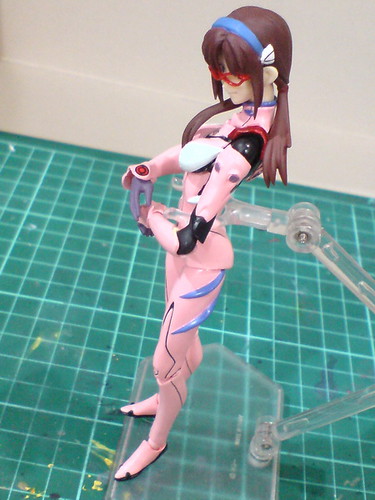

More action poses from Figma Mari, as well as her "Beast Mode" configuration coming up in the next posting, ^^




No comments:
Post a Comment